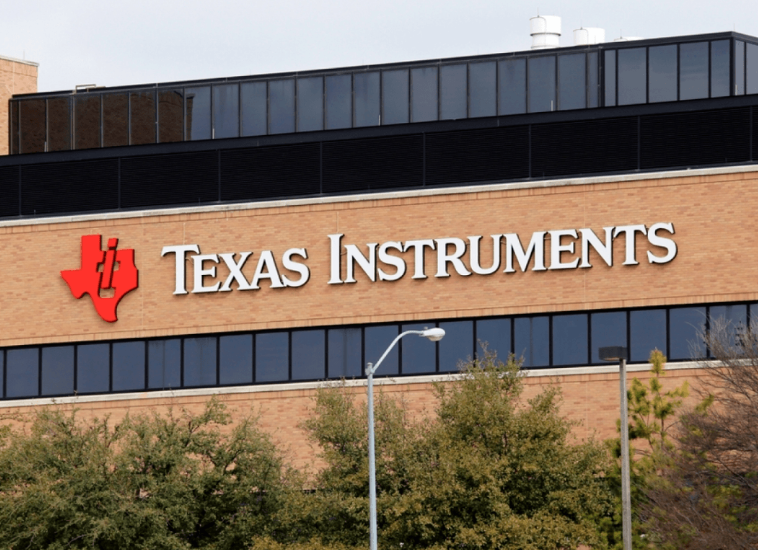
Factory automation devices such as sensors, actuators, drivers, and programmable logic controllers (PLCs) support multiple industrial EtherNet protocols (such as EtherCAT, Profinet, EtherNet/IP, and Sercos), Each protocol can be replaced by loading a different software image on the hardware platform.
Multi-protocol industrial Ethernet systems reduce manufacturing costs during the hardware development cycle and speed time to market by reducing bill of materials costs by requiring only the manufacture of a single printed circuit board. Manufacturers can use different industrial Ethernet protocols to provide field devices for factory automation, such as digital input modules or servo drivers.
Architectures such as Texas Instruments' Programmable Real-Time Unit Industrial Communications Subsystem (PRU-ICSS) can support industrial Ethernet rates of 1,000Mbps for field devices, especially with the new time-sensitive Networking (TSN) protocol.
Industrial Ethernet system architecture
Figure 1 shows the main components in an industrial Ethernet field device that exchange process data with PLCS and other field devices. Two Ethernet ports support linear or ring Ethernet topologies, which means the PLC is connected to a range of field devices via Ethernet cables without the need for an Ethernet switch.
Figure 1: Industrial Ethernet field device system block diagram

From the RJ45 connector, the dielectric correlation interface (MDI) is connected to the magnetic elements that provide an isolation gate from other devices before the Ethernet frame reaches the Ethernet physical Layer (PHY) transceiver.
The PHY converts Ethernet frames to analog-to-digital (receiver) and digital-to-analog (transmitter) and outputs a digital bit stream via a media Independent interface (MII), a simplified Gigabit Media Independent Interface (RGMII), or a serial Gigabit Media Independent Interface (SGMII).
PHY plays an important role in industrial Ethernet, as important as the media Access Controller (MAC). The PHY must support copper media with different wire pairs (single wire pair for T1 single wire pair Ethernet, dual wire pair for 100Mbps Ethernet, and four-wire pair for 1,000Mbps Ethernet), depending on the MDI. Some industrial Ethernet networks also support optical fiber, which offers better electromagnetic compatibility (EMC) and better protection against electromagnetic interference in harsh industrial environments.
Next, the Ethernet byte stream enters the MAC via the MII. The MAC is responsible for the Industrial Ethernet protocol and is an important functional block for implementing multi-protocol industrial Ethernet support.
Because each industrial Ethernet protocol handles industrial Ethernet frames differently when extracting and inserting process data, MAC processing methods must vary for each protocol. Application-specific IC solutions such as MAC are typically fixed to use a single protocol and do not have multi-protocol capabilities. A MAC that supports multiple protocols must support multiple Ethernet frame processing methods, such as dynamic processing, pass-through forwarding, frame preemption, and store-and-forward.
The MAC can transfer process data from the PLC to the central processing unit (CPU) through an interface. If the MAC is a physically independent device, the interface rate is lower (serial Peripheral Interface (SPI) or I2C, or memory-mapped external bus). If the MAC is integrated with the CPU, shared high-speed memory provides this interface and synchronizes process data between the MAC and the CPU.
The CPU performs multiple tasks. Each industrial Ethernet protocol requires a software stack to interact with the MAC in order to exchange process data. Field devices use this process data to control digital inputs and outputs or to control the speed and rotation of servo drives.
If the system contains multiple cpus, it is common practice to split the workload, with the industrial Ethernet stack running on its own CPU and the industrial application running on the other cpus.
Different kinds of operating systems (OS) can be run on the CPU kernel: advanced operating systems (such as Linux or real-time Linux) or real-time operating systems (RTOS) (such as Free-RTOS or no-OS).
Texas Instruments Sitara series solutions and Ethernet PHYs for multi-protocol Industrial Ethernet
The Texas Instruments Sitara processor family supports programmable Macs and their integrated PRU-ICSS peripherals. The PRU loads any industrial Ethernet protocol firmware at runtime. Sitara AM6442 As shown in Figure 2, AM2434 and AM2434 support 1,000Mbps protocols, such as TSN. PRU-ICSS also acts as a standard Ethernet MAC and a two-port Ethernet switch.
Figure 2: Sitara AM6442 processor solution and PRU-ICSS for multi-protocol industrial Ethernet support

The Texas Instruments Sitara processor family supports multiple instances of PRU-ICSS, This enables industrial peripherals such as position encoders (EnDAT 2.2, HIPERFACE digital servo link [DSL], bidirectional serial synchronization [BiSS]), pulse-width modulation (PWM), and Delhi-Sigma decimation filters for externally isolated analog-to-digital converters. The servo drive uses these peripherals.
Texas Instruments Sitara processors also integrate a variety of functions used in industrial applications, including ADCs, SPI, I2C, and universal memory controllers. The system-on-chip also has internal shared memory for exchanging process data between the MAC and the CPU.
As shown in Figure 3, the Texas Instruments Sitara processor family features multiple Arm® Cortex®-A53 cores for advanced operating systems (HLOS). Multiple Arm Cortex-R5F cores for RTOS or bare metal applications and PRU-ICSS for Industrial Ethernet Macs.
Figure 3: Multi-core processor solutions and PRU-ICSS using RTOS, HLOS, and firmware

By integrating the programmable MAC approach, the different frame processing methods required for multi-protocol industrial Ethernet are supported, and the application processor is placed on a single chip. With an internal high-speed memory interface, fast exchange of process data between processor and MAC is possible, and the family offers a scalable processor core.
Texas Instruments offers Evaluation modules (EVMs) for the Sitara processor family as well as Ethernet PHY solutions using DP83867 or DP83869 Ethernet PHY transceivers.
Heisener Electronic is a famous international One Stop Purchasing Service Provider of Electronic Components. Based on the concept of Customer-orientation and Innovation, a good process control system, professional management team, advanced inventory management technology, we can provide one-stop electronic component supporting services that Heisener is the preferred partner for all the enterprises and research institutions.
